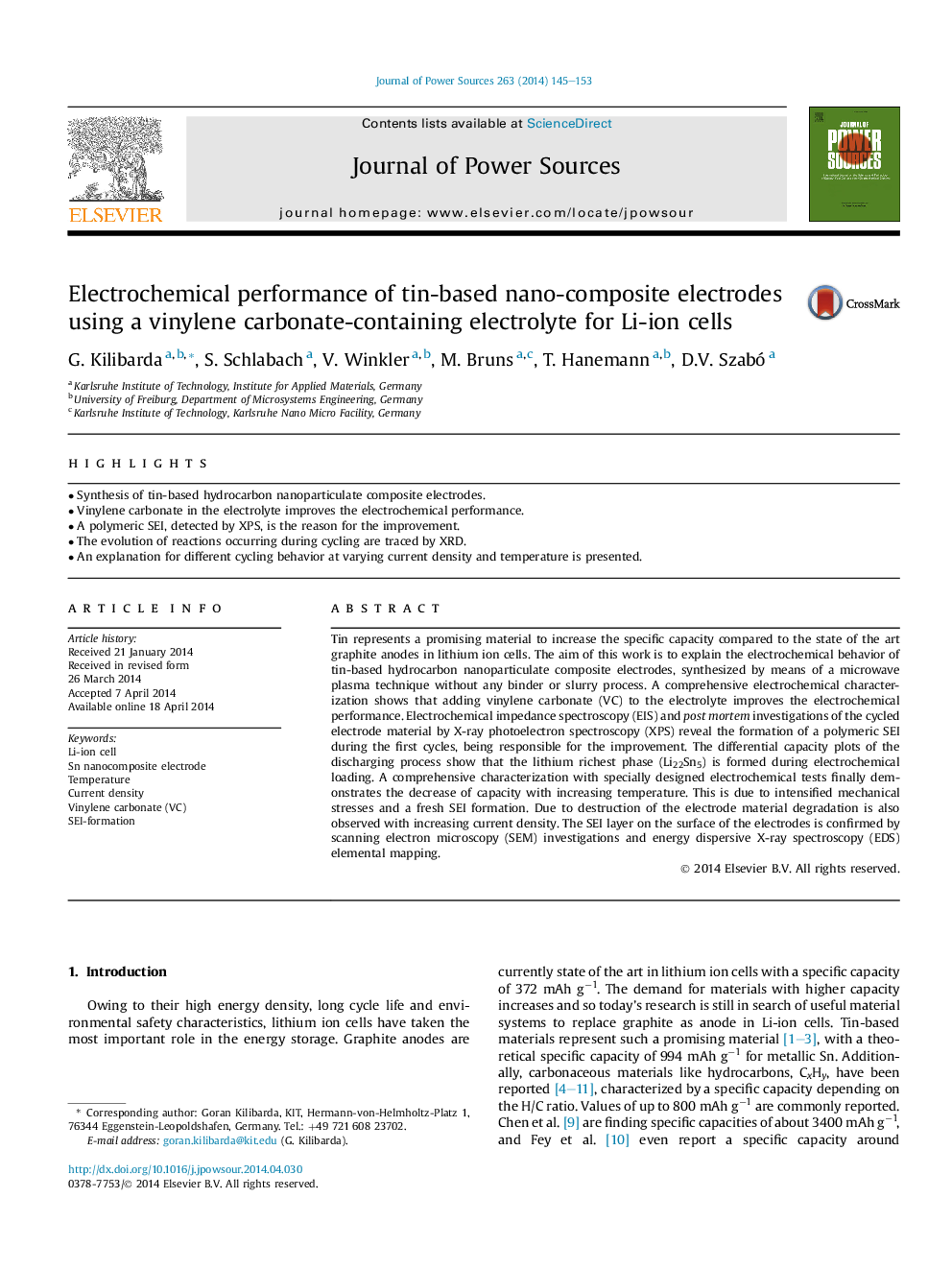| کد مقاله | کد نشریه | سال انتشار | مقاله انگلیسی | نسخه تمام متن |
|---|---|---|---|---|
| 1286496 | 1497969 | 2014 | 9 صفحه PDF | دانلود رایگان |
• Synthesis of tin-based hydrocarbon nanoparticulate composite electrodes.
• Vinylene carbonate in the electrolyte improves the electrochemical performance.
• A polymeric SEI, detected by XPS, is the reason for the improvement.
• The evolution of reactions occurring during cycling are traced by XRD.
• An explanation for different cycling behavior at varying current density and temperature is presented.
Tin represents a promising material to increase the specific capacity compared to the state of the art graphite anodes in lithium ion cells. The aim of this work is to explain the electrochemical behavior of tin-based hydrocarbon nanoparticulate composite electrodes, synthesized by means of a microwave plasma technique without any binder or slurry process. A comprehensive electrochemical characterization shows that adding vinylene carbonate (VC) to the electrolyte improves the electrochemical performance. Electrochemical impedance spectroscopy (EIS) and post mortem investigations of the cycled electrode material by X-ray photoelectron spectroscopy (XPS) reveal the formation of a polymeric SEI during the first cycles, being responsible for the improvement. The differential capacity plots of the discharging process show that the lithium richest phase (Li22Sn5) is formed during electrochemical loading. A comprehensive characterization with specially designed electrochemical tests finally demonstrates the decrease of capacity with increasing temperature. This is due to intensified mechanical stresses and a fresh SEI formation. Due to destruction of the electrode material degradation is also observed with increasing current density. The SEI layer on the surface of the electrodes is confirmed by scanning electron microscopy (SEM) investigations and energy dispersive X-ray spectroscopy (EDS) elemental mapping.
Journal: Journal of Power Sources - Volume 263, 1 October 2014, Pages 145–153
